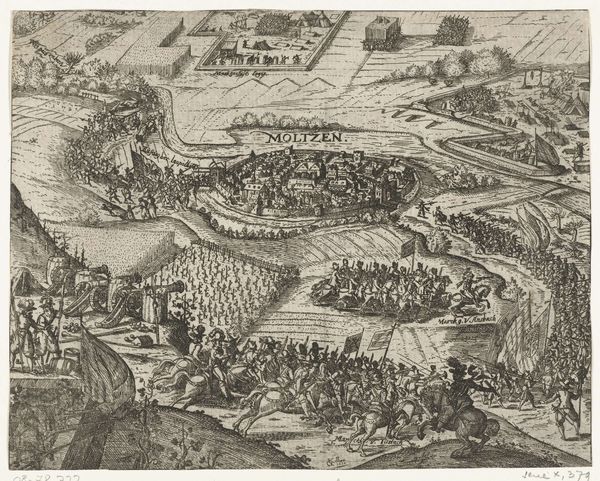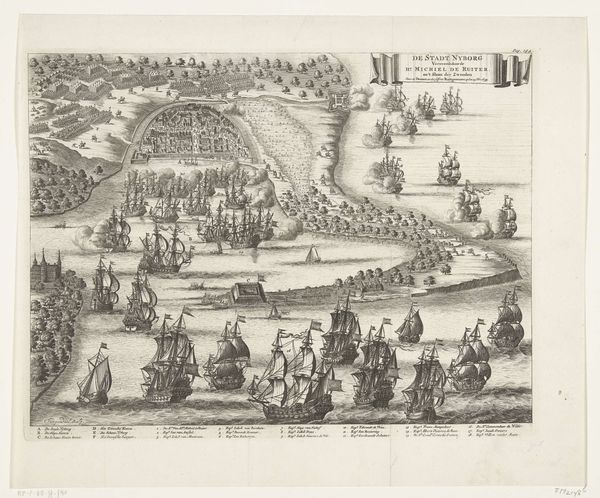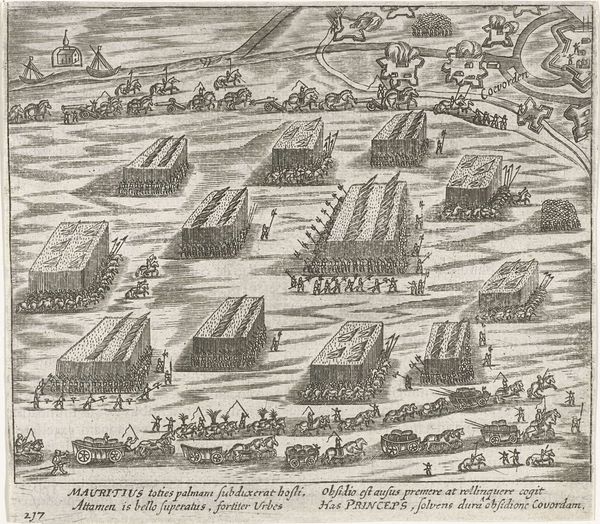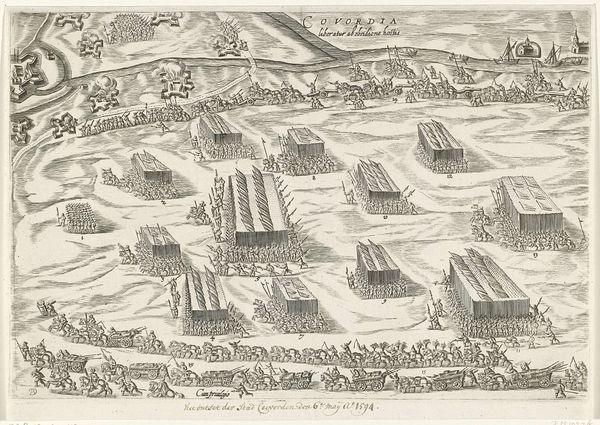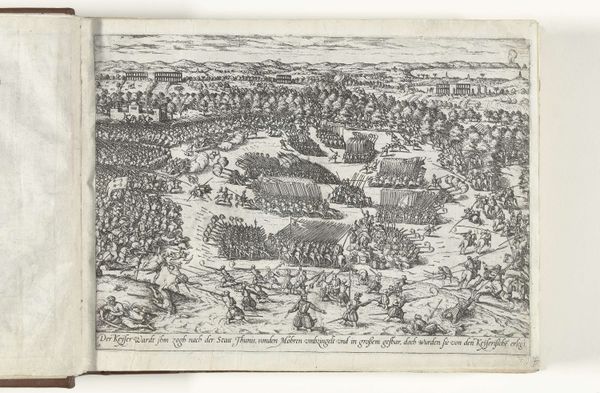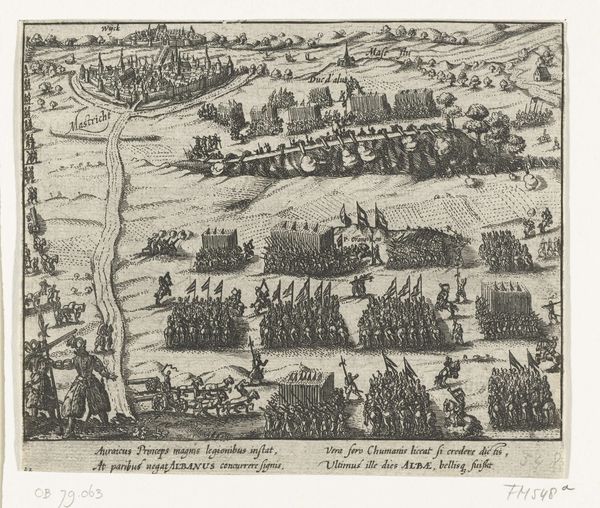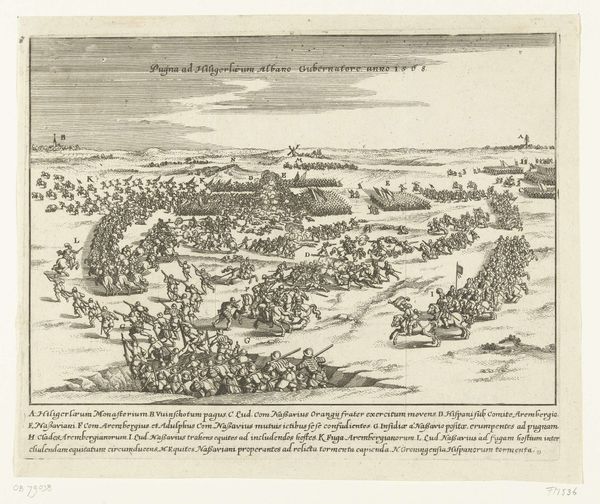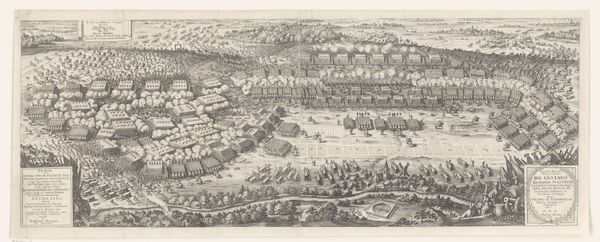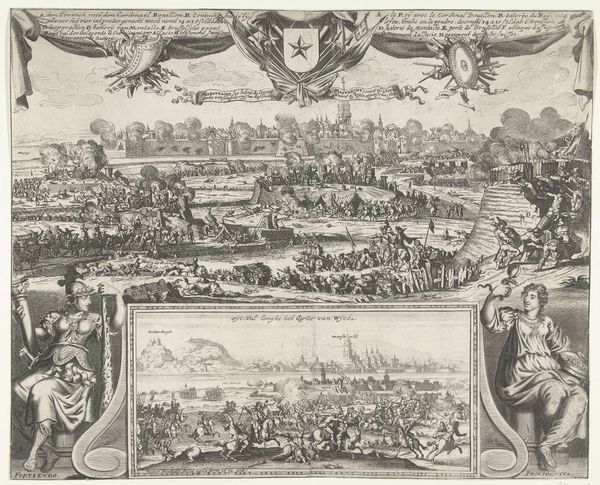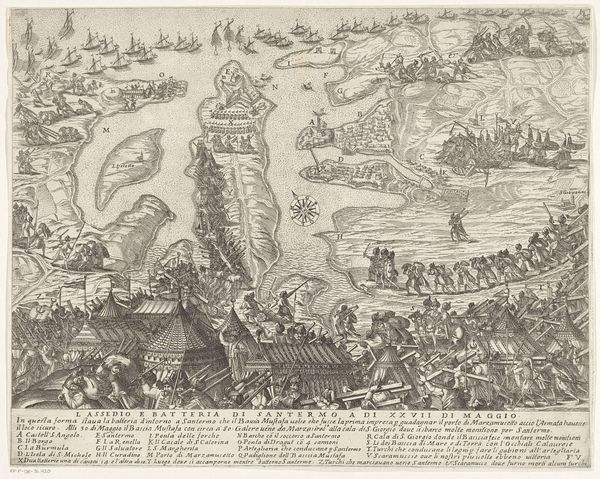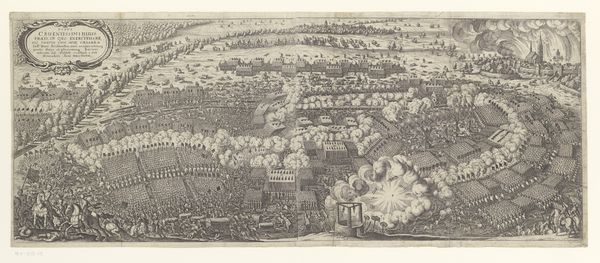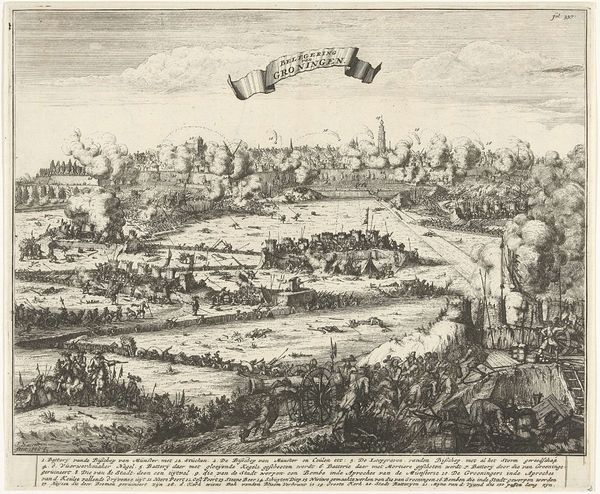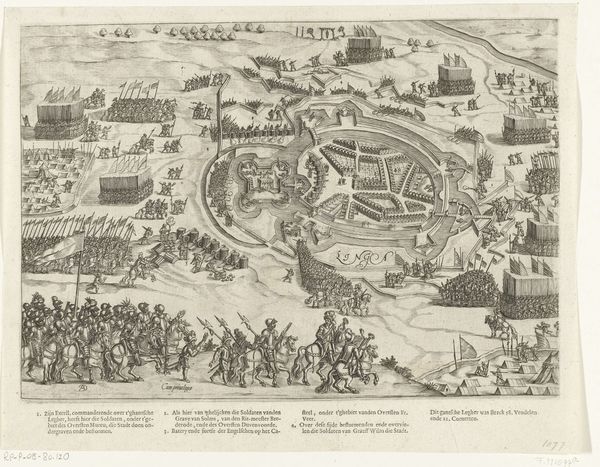
drawing, print, etching, ink, engraving
#
drawing
#
pen drawing
# print
#
etching
#
landscape
#
ink
#
genre-painting
#
history-painting
#
engraving
Dimensions: height 225 mm, width 310 mm
Copyright: Rijks Museum: Open Domain
Editor: This print, titled "Slag bij Turnhout, 1597", was created by Bartholomeus Willemsz. Dolendo sometime between 1600 and 1610 using etching, engraving, pen, and ink. It depicts a battle scene...it’s quite detailed. How would you interpret this work within its historical context? Curator: Well, given my perspective, the 'Slag bij Turnhout' offers a fascinating lens through which to examine the politicized visual culture of the Dutch Revolt. How do you think it served a purpose beyond just documenting the event? Editor: I guess it could be used for propaganda, but that's just a guess. Curator: Exactly! Think about the power of printmaking at the time. This image, circulated widely, helped construct a narrative around the Dutch struggle for independence. What visual cues suggest a particular viewpoint or bias? Editor: Maybe the way the different armies are organized so neatly, the perfect shapes for each battalion… almost geometric. It feels very… curated. Curator: Good eye! The clear organization, the emphasis on the scale of the forces… it’s all carefully designed to project strength and order, contributing to a specific, perhaps idealized, image of the Dutch forces. Consider the role the Rijksmuseum plays now in showing this artwork and, as a consequence, in promoting that specific interpretation of history. Editor: That’s a perspective I hadn’t considered – the artwork actively shaping, or even skewing, how history is understood. So museums become places that shape historical memory and political identity, right? Curator: Precisely! And artworks like this engraving become powerful tools within those institutions. Editor: That's… a lot to think about. I will certainly have to reflect on what is behind the curation. Curator: I encourage you to always question what is being presented and, more importantly, what's omitted, whether in art or history.
Comments
No comments
Be the first to comment and join the conversation on the ultimate creative platform.
